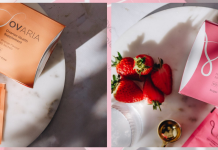With the onset of Winter, there is nothing quite like a hot cup of cocoa, a slow-cooked meal and a hot bath to soothe the soul on a chilly day. But cooler temperatures also mean an increased risk of burn injuries, due to the greater use of heat sources, and burns can range from simple household accidents to devastating shack fires.
Dr Saajida Ghoor (pictured above), a healthcare practitioner specialising as a plastic and reconstructive surgeon in Durban, says most burns happen in seconds and can scar the individual and family for life.
With National Burns Awareness Week happening from 13 – 17 May, Dr Ghoor explains what to avoid when treating burns and shares some great household safety tips to prevent burns.
What is a burn? Skin that is damaged from direct heat, radiation, chemicals, electricity. They are classified into different levels depending on the depth of injury to the skin.
With superficial burns (previously known as first degree burns), the outer layer of skin (the epidermis) is affected. The skin will look red and painful with no blisters. Sunburn is one example of this type of burn.
Partial thickness burns (previously known as second degree burns) affect the top two layers of skin (epidermis and dermis). The skin will look wet or moist and painful blisters may form. This type of burn could occur from hot liquids or flash burns.
Full thickness burns (previously known as third degree burns) affect all three layers of skin (epidermis, dermis and subcutaneous tissue). The skin may turn black, white, or bright red and have a leathery appearance. Flames, hot liquids, contact with stoves or irons are some of the causes for these types of burns.
First aid for burns
Apply cool running water for 20 minutes. By cooling the burn this will stop the burning process, but do not apply ice as this can cause the burn to become deeper and frostbite can develop. Do not apply butter or oil-based products as they trap heat and make the burn deeper. Turn off the current prior to removing any injured person to prevent further electrocution. STOP, DROP and ROLL is the motto for anyone who has sustained flame burns.
Superficial burns: Cool the affected area immediately (as above) or apply a cold, wet compress. Apply petroleum jelly or aloe vera gel a few times a day to help soothe and protect the skin. Consider taking over-the-counter pain medicine (such as acetaminophen or ibuprofen) to ease pain. Protect the affected area from direct heat and sunlight to prevent pigmentation.
Partial thickness burns: Follow superficial burn treatment steps and: Avoid touching or breaking blisters because this can increase the risk of infection. Apply a nonstick bandage if clothing or daily activity might irritate the skin or blisters or if the blisters have broken open. Consult your doctor.
Full thickness burns: Seek immediate medical attention! While waiting for medical help to arrive, cover the affected area in a clean bandage or cling wrap and try to keep it raised above heart level.
Helpful safety tips
Kicthen:
- Invest in a cordless kettle. View your kettle as a weapon.
- Small children can pull on kettle cords and this could result in the freshly boiled kettle of water spilling out on them.
- Keep all hot drinks, hot cooking oil and hot porridge out of the reach of children.
- Do not carry urns or pots of boiling water around while there are toddlers on the floor or children running about.
- Turn pot handles away from the front of the stove.
- Do not cook eggs in a microwave. The shell can explode and cause severe face and eye injuries.
- Noodles cooked in microwave ovens become extremely hot, along with the container, and can cause severe burns.
- Never hold a child while cooking.
- Do not leave children unsupervised near matches, candles, lighters or fireworks or when they are in or near the kitchen.
Around the house:
- Put candles in a deep glass bottle with sand in the bottom so the flame will be put out if it falls over.
- Repair all faulty electrical plugs and leads.
- Report stolen cover plates on power poles or substations with broken fences or locks.
- Lock paraffin and other flammables, including “safe” gels away.
- Do not cover braai fires with sand. The heat stays in the sand for hours and will burn unsuspected feet walking over the sand. Rather pour water over fires and coals.
- Avoid using tablecloths or anything a child can pull on and cause hot food or liquid to spill onto them.
- Create a fire escape plan.
- Have a fire extinguisher and have it regularly checked.
- Install smoke detectors.
Bathroom:
- Pour cold water in the bath first and then add the hot water.
- Set your geyser to low temperatures (about 55 degrees).
- Always test the bath water with your elbow before bathing children.
- Do not leave children unsupervised
As a registered cosmetic and reconstructive surgeon, Dr Ghoor offers a comprehensive service of both surgical and non-surgical procedures.
To make an appointment with Dr Saajida Ghoor at her medical suite at Netcare Parklands Hospital
phone 031 240 5114 • info@[email protected]






